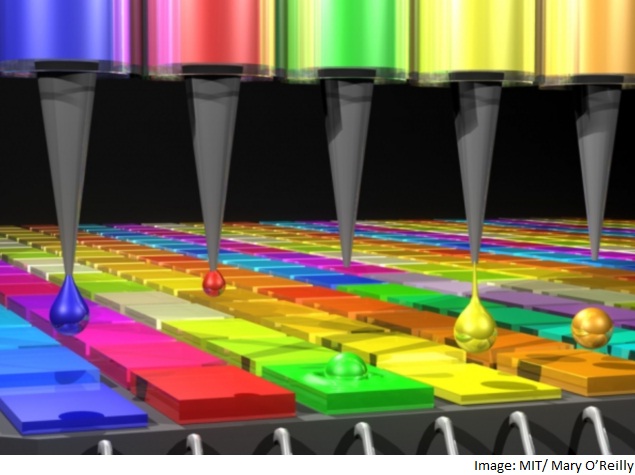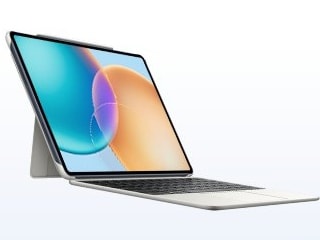- Home
- Science
- Science News
- Spectrometer That Fits in Smartphones to Help Diagnose Diseases and More
Spectrometer That Fits in Smartphones to Help Diagnose Diseases and More

Spectrometers measure the properties of light and are widely used in physical, chemical, and biological research.
These devices are usually too large to be portable, but Massachusetts Institute of Technology (MIT) scientists have created spectrometers small enough to fit inside a smartphone camera, using tiny semiconductor nanoparticles called quantum dots.
"Such devices could be used to diagnose diseases, especially skin conditions, or to detect environmental pollutants and food conditions," said Jie Bao, a former MIT postdoc and the lead author of a paper describing the quantum dot spectrometers in the journal Nature.
Quantum dots, a type of nanocrystals discovered in the early 1980s, are made by combining metals such as lead or cadmium with other elements including sulfur, selenium, or arsenic.
By controlling the ratio of these starting materials, the temperature, and the reaction time, scientists can generate a nearly unlimited number of dots with differences in an electronic property known as bandgap, which determines the wavelengths of light that each dot will absorb.
The new quantum dot spectrometer, about the size of a US quarter, deploys hundreds of quantum dot materials that each filter a specific set of wavelengths of light.
The quantum dot filters are printed into a thin film and placed on top of a photodetector such as the charge-coupled devices (CCDs) found in cellphone cameras.
The researchers created an algorithm that analyses the percentage of photons absorbed by each filter, then recombines the information from each one to calculate the intensity and wavelength of the original rays of light.
The more quantum dot materials there are, the more wavelengths can be covered and the higher resolution can be obtained.
In this case, the researchers used about 200 types of quantum dots spread over a range of about 300 nanometres. With more dots, such spectrometers could be designed to cover an even wider range of light frequencies.
If incorporated into small handheld devices, this type of spectrometer could be used to diagnose skin conditions or analyse urine samples, Bao said.
They could also be used to track vital signs such as pulse and oxygen level, or to measure exposure to different frequencies of ultraviolet light, which vary greatly in their ability to damage skin.
Get your daily dose of tech news, reviews, and insights, in under 80 characters on Gadgets 360 Turbo. Connect with fellow tech lovers on our Forum. Follow us on X, Facebook, WhatsApp, Threads and Google News for instant updates. Catch all the action on our YouTube channel.
Related Stories
- Samsung Galaxy Unpacked 2025
- ChatGPT
- Redmi Note 14 Pro+
- iPhone 16
- Apple Vision Pro
- Oneplus 12
- OnePlus Nord CE 3 Lite 5G
- iPhone 13
- Xiaomi 14 Pro
- Oppo Find N3
- Tecno Spark Go (2023)
- Realme V30
- Best Phones Under 25000
- Samsung Galaxy S24 Series
- Cryptocurrency
- iQoo 12
- Samsung Galaxy S24 Ultra
- Giottus
- Samsung Galaxy Z Flip 5
- Apple 'Scary Fast'
- Housefull 5
- GoPro Hero 12 Black Review
- Invincible Season 2
- JioGlass
- HD Ready TV
- Laptop Under 50000
- Smartwatch Under 10000
- Latest Mobile Phones
- Compare Phones
- OnePlus 15R
- Realme Narzo 90x 5G
- Realme Narzo 90 5G
- Vivo S50 Pro Mini
- Vivo S50
- OPPO Reno 15c
- Redmi Note 15 5G
- Redmi Note 15 Pro 5G
- Asus ProArt P16
- MacBook Pro 14-inch (M5, 2025)
- Infinix Xpad Edge
- OnePlus Pad Go 2
- Just Corseca Skywatch Pro
- Honor Watch X5
- Acerpure Nitro Z Series 100-inch QLED TV
- Samsung 43 Inch LED Ultra HD (4K) Smart TV (UA43UE81AFULXL)
- Asus ROG Ally
- Nintendo Switch Lite
- Haier 1.6 Ton 5 Star Inverter Split AC (HSU19G-MZAID5BN-INV)
- Haier 1.6 Ton 5 Star Inverter Split AC (HSU19G-MZAIM5BN-INV)

















